Jul 2022
Jul 2022
Making space for service design
selling and building service design function in France RnD

As the only in-house service designer in a team, a huge part of your job is to educate, sell and integrate service design. I was also the first, so I had to
-
introduce it to many peers and
-
build an understanding of what shape service design can take in this team
*Illustration by Kry Global creative team
-
Most members of the team didn't know about Service Design.
-
RnD teams had set processes and ways of working; most had not worked with Service design tools before.
-
Operations, Business and Marketing teams had limited visibility of the RnD function and the only point of contact were Product manager
-
Team members have a basic understanding of what Service Design brings to the table; increased trust in the approach.
-
Product Managers started to identify topics that needed Service Design expertise
-
Resources are being extensively used not just by the RnD team, but by Operations and Business stakeholders too.
-
People started reaching out!
THEN.
NOW.
Enable
Educate
Building trust by showing value
^
Engage
Mar 2021
Jul 2022
"Anubhuti also has the ability to reach out to people and get them involved. Being the only service designer representative for an entire market her way of engaging colleagues and peers in her work has been a real strength of hers."
- Lili Ann Laan ( Former Service Designer, Nordics market, Kry Livi)
Building trust
Starting out
First few weeks, the initial few minutes of a lot of the meetings used to be me explaining what service design is. I think some people did get a sense of it, but I wasn't really sure if all the stakeholders saw the value I could bring.
I had to show them, for them to buy it.
Working with the Head of Design, France, we identified problem areas that I could work with to have the most impact.
What I can help with?
What are you struggling
1. RnD team was struggling to communicate their impact on the user experience
2. Collaboration with the core teams was difficult as onboarding on any topic and the context was cumbersome
The real problem was that no one knew the whole picture. Initiative descriptions and wordy word documents didn't help. I started with the clinician experience, interviewed stakeholders, dug through existing resources and created the clinician service blueprint. It highlighted the actions, tools, and problems in the clinician experience. It also included touchpoints and their interactions with the Ops, HR and Marketing teams.
It helped RnD and Operations see each other's work and impact, spot pain points and low-hanging fruits to improve the clinician experience.
It also helped core teams to understand the context, onboard quickly and see issues themselves instead of having to rely on Slack threads and inefficient syncs.

The people who worked closely with me on projects could experience first-hand what service design brought to the table, hence were on board but that wasn't the case with others. I realised that there will be a constant need to step up and show the value of Service design, so I
Found the allies
More embedded in different subteams Project Managers and Product designers helped build the case for service design. They shared resources often with diverse stakeholders, included me more in projects and helped identify opportunities for me to work on.
I also saw that
Resources go a longggg way
I continued to dig for high-level problems in the ways of working and produced artefacts like journey maps, blueprints, slide decks etc. that could help the team. Resources travelled, reached wider audience and served as the best advertisement for Service design
Educating
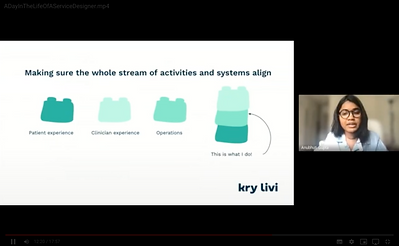
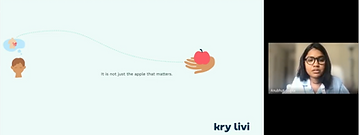
During the 3 month review, I discussed with the lead Service Designer at the time that the team doesn't know when to reach out to me, I often get to know of problems I could have helped with.
We decided that I should hold a session to educate the team. I did a presentation mixed with some storytelling and humour, explaining
-
What is service design?
-
How it is at Kry Livi?
-
What do I do?
for the entire France market since I wanted to reach out to stakeholders outside of RnD as well
Adapting to engage
One size doesn't fit all.
To engage different stakeholders and cater to their different needs, often the tools and methods have to be adapted. I did that constantly. Be it switching tools between Figma and Miro, or tweaking workshop templates. One major example of this is how I reworked the blueprints to engage stakeholders better, used it as a tool rather than a resource
Beyond the big blueprints
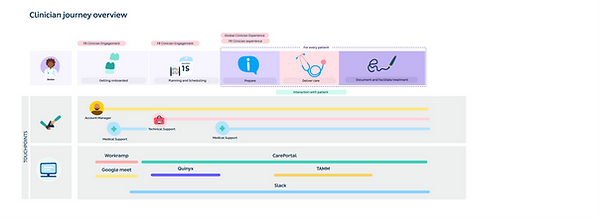
- simpler maps to give an overview of the clinician and patient experience.
- finding synergies by being able to view where different teams have an impact

Using blueprints to actively brainstorm.
Building the mindset
Measuring impact through experience

Worked with designers to develop experience maps (a different case study in itself!) that would enable a shared language across the company.
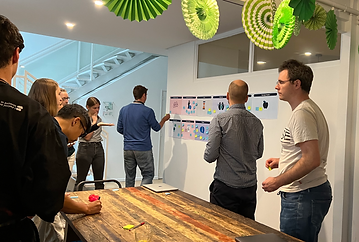
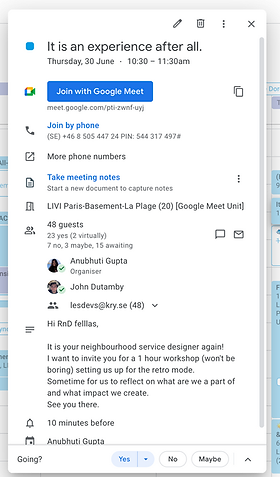
The resource had to be tested and made actionable. During a retro, I also wanted the team to look at impact beyond numbers.
I organised a workshop for the entire RnD, to think what part of patient and clinician experience they have impacted both directly and indirectly.
This led to interesting discussions on the work they have done, and saw it from a perspective - EXPERIENCE LENS
"It reminded me why I joined Livi...."
- Senior Product Designer
Enabling practice
As the only service designer, I often wanted to be at multiple places but couldn't be. One objective of my role was also to help others practice service design. This meant often acting as a consultant on some topics, giving inputs and nudging members.
I also tried to do that by producing templates for workshops, or mapping experiences which served as a good starting point and gave direction

Lowering the threshold to practice service design.
Blueprint template that can be used by stakeholders to capture information in a holistic way
Apart from above listed actions, I over-communicated through Slack, sharing resources I produced often. I made sure to always post reflections and summary after workshops, meetings and exploration- staying true the principle of Evidencing, giving something tangible to stakeholders. I made sure I was well-prepared when I demanded time from my team - tried to make each engagement an experience.
It is all about the experiences after all.
INDICATORS of SUCCESS
Some
"...the account manager from the Operations team showed me the blueprint to discuss the details."

People were using the resources.
People actively thought about service design resources.
The user researcher told me
And bought the approach
One of the biggest wins was when Product manager proposed that we should create journey map to decide on the scope for a new team.
I did an internal survey to get an idea of the needs and expectations from the blueprints. Respondents had feedback on the resources and wanted to use it in different capacities.
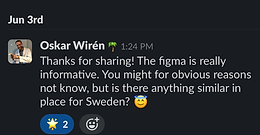
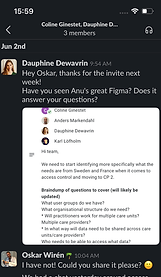
Value created, making space for creating more
It was great to see simple 3 page deck replacing slack threads and meetings. And making stakeholders realising that more of this is needed.
"Her natural leadership influenced all stakeholders from our ecosystem with impact and pragmatism, and against all odds pushed ethics deep inside our complex business requirements."
- Tep Chann Nimmith Tek (Senior Product Designer, France RnD, Livi)
